
Philipsburg Manor at Sleepy Hollow, NY cover page. |

Map of the Hudson Valley showing Sleepy Hollow. |
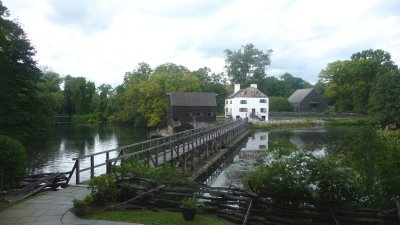
Bridge leading to the gristmill and wharf of Philipsburg Manor. |

Looking across the wooden-planked bridge. |

The the gristmill is on the left, the manor house is on the right. |
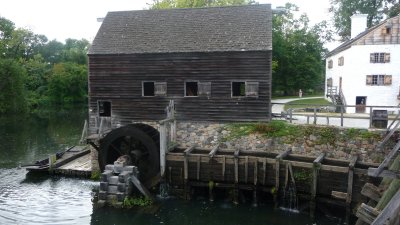
View of the gristmill and the water wheel that powers it. |

Close-up of the water wheel. |
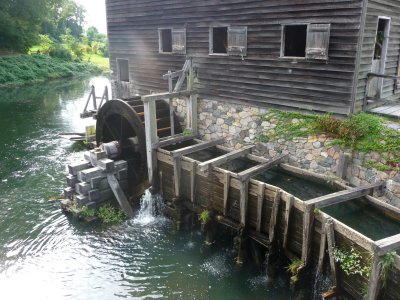
The Philipses had to dam up the river to construct the flume that directs the water towards the mill. |
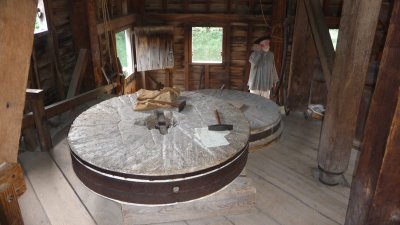
Interior of the gristmill with its massive stones which grind the grain. |

This costumed interpreter was giving a tour of the mill. |
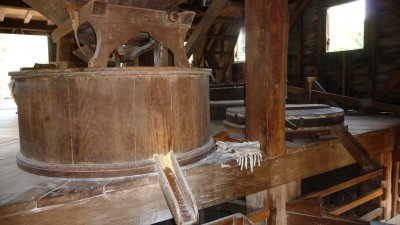
The mill required constant maintenance in the 18th century, just as it does now. |
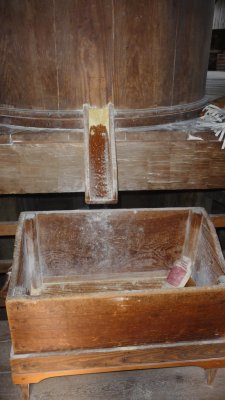
The ground grist flows down this shaft into the open box below. |
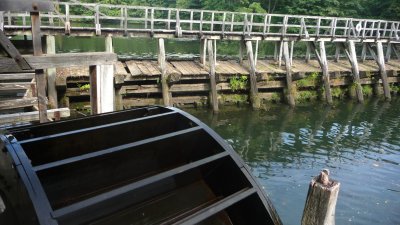
View of the water wheel from inside the gristmill with the wooden-planked bridge in the background. |
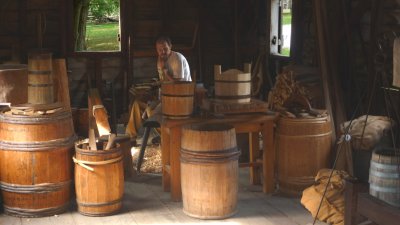
This man inside the gristmill was building barrels, probably as dairy and butter casks. |

Close-up of the 300-year-old stone manor house. |
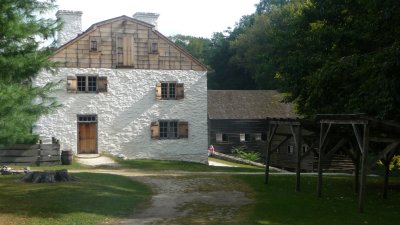
That is the gristmill behind the manor house. |
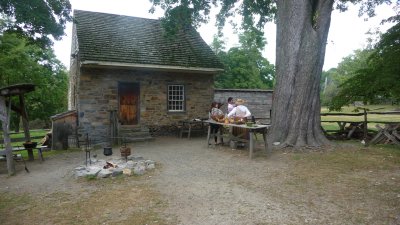
A small stone house on the manor property that was probably used for doing chores. |

Interior of the small stone house with a fireplace, cooking pots, tables and baskets. |
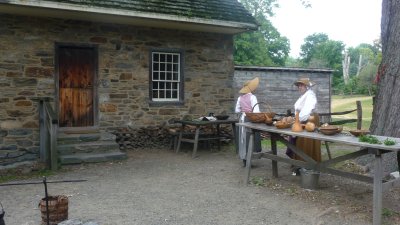
These costumed lady interpreters were exhibiting some of the vegetables grown at the manor. |
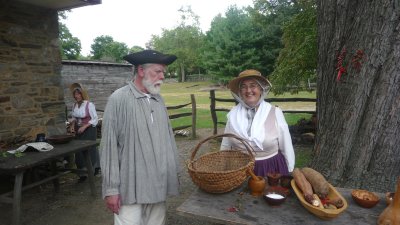
There were yams, maze, grains and different types of squash. Some vegetables originated from Africa or from the Caribbean. |
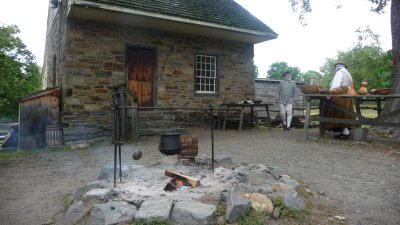
This pot over an open fire was a reenactment of how they lived in the 17th and 18th centuries at Philipsburg Manor. |

Close-up of the iron pot over the open fire. |

I accepted a challenge from this farm hand in the barn, and milked the cow! |

Please ignore the cow dung in this photo! |
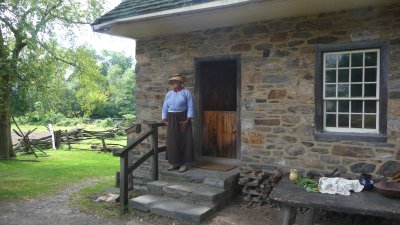
This costumed interpreter outside of the small stone house probably represents an enslaved African working at Philipsburg Manor. |

Close-up of the costumed lady dressed in 18th century clothing. |
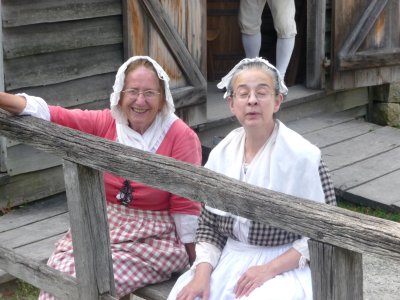
These friendly ladies bode us farewell as we left Philipsburg Manor. |











